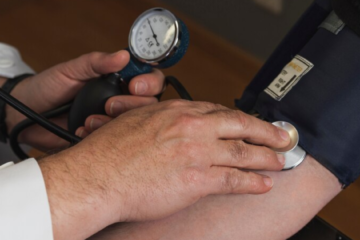
Urinary Tract Infections (UTIs) are a common and often painful ailment that many of us have encountered at some point in our lives. While they may seem like a minor inconvenience, it’s essential to understand that UTIs can sometimes take a more serious turn, leading to potentially severe health complications. In this comprehensive blog, we will dive deep into the world of UTIs and explore when and why they can become a serious concern. From the underlying causes to the symptoms, risk factors, complications, and prevention strategies, we aim to equip you with the knowledge needed to protect your urinary health effectively. So, join us on this journey as we uncover the critical aspects of UTIs and learn how to distinguish when these seemingly routine infections demand your utmost attention.
Understanding UTIs
A Urinary Tract Infection (UTI) is a common medical condition that can affect anyone, from infants to the elderly. UTIs occur when bacteria or, in some cases, other microbes enter the urinary tract and cause an infection. The urinary tract includes the kidneys, bladder, urethra, and ureters, and UTIs can manifest in various forms depending on the affected part of the tract. To understand UTIs in detail, let’s explore their causes, symptoms, risk factors, and treatments.
Causes
Bacterial Entry Through the Urethra
The most common cause of UTIs is the entry of bacteria through the urethra, the tube that carries urine from the bladder to the outside of the body. Various bacteria can be responsible for UTIs, with Escherichia coli (E. coli) being the predominant culprit. Factors contributing to bacterial entry through the urethra include:
- Improper Hygiene: Poor personal hygiene can introduce the risk of UTIs.
- Obstruction or Narrowing of the Urethra: Any condition obstructing or narrowing the urethra can create a conducive environment for bacteria to accumulate and multiply. This can include structural abnormalities, urinary stones, or scarring.
Sexual Activity
Sexual intercourse can introduce bacteria into the urinary tract, particularly in women. The urethra in women is in close proximity to the anus, making it easier for bacteria from the gastrointestinal tract to enter the urethra. Sexual activity can sometimes push these bacteria further into the urinary system, increasing the risk of infection.
Catheter Use
Catheters are medical devices inserted into the urinary tract to drain urine, and they are often used in healthcare settings, particularly in hospitalized patients or those with certain medical conditions. Catheters provide a direct pathway for bacteria to enter the bladder and cause UTIs. This is why catheter-associated UTIs are a significant concern.
Urinary Tract Abnormalities
Some individuals are born with structural abnormalities in the urinary tract, making them more susceptible to UTIs. These abnormalities can include congenital anomalies of the kidneys, ureters, or bladder. Abnormalities might create pockets where bacteria can collect and thrive.
Weakened Immune System
Conditions that weaken the immune system, such as diabetes, HIV/AIDS, or undergoing cancer treatments, can impair the body’s ability to fight off infections, including UTIs. A weakened immune system makes individuals more vulnerable to recurrent or severe UTIs.
Other Factors
Several other factors can increase the risk of UTIs, including:
- Age and Gender: Women are more prone to UTIs than men, mainly due to their shorter urethras, which allow bacteria easier access to the bladder. In addition, hormonal changes during pregnancy and menopause can increase the risk of UTIs in women. UTIs are also more common in older adults, often due to factors like weakened immune systems and urinary incontinence.
- Dehydration: Insufficient fluid intake can lead to concentrated urine, which can irritate the urinary tract and make it easier for bacteria to cause infections. Staying well-hydrated is an essential preventive measure.
- Sexual History: Individuals with a history of frequent or recent sexual activity may be more prone to UTIs. Sexual activity can disrupt the natural balance of bacteria in the urinary tract.
Understanding the causes of UTIs is vital for both prevention and effective treatment. Taking preventive measures such as maintaining proper hygiene, staying hydrated, and addressing any underlying health conditions can help reduce the risk of UTIs. If you suspect a UTI or experience symptoms, seeking prompt medical attention is crucial to prevent the infection from spreading and causing more severe complications.
Types of UTIs
UTIs can manifest in different forms depending on which part of the urinary tract is affected:
Cystitis: This is a bladder infection and the most common type of UTI. It often causes symptoms like frequent urination, a burning sensation during urination, and cloudy or bloody urine.
Pyelonephritis: This is a kidney infection, and it is a more severe form of UTI. Kidney infections can lead to high fever, and pain in the upper back or side, and can be life-threatening if not treated promptly.
Urethritis: Urethritis is an infection of the urethra. Symptoms may include pain or discomfort while urinating and discharge from the urethra.
Symptoms of UTIs
Urinary Tract Infections (UTIs) can manifest with a variety of symptoms that can range from mild discomfort to more severe and potentially dangerous signs. Recognizing these symptoms is crucial for early diagnosis and prompt treatment. Here’s a detailed explanation of the symptoms of UTIs:
1. Frequent Urge to Urinate
One of the hallmark symptoms of a UTI is a frequent urge to urinate. You may feel like you need to urinate urgently, even if you’ve recently emptied your bladder. This frequent urge can disrupt your daily routine and sleep.
2. Pain or Burning Sensation During Urination
UTIs often cause a painful or burning sensation when you urinate. This discomfort is due to irritation and inflammation of the urinary tract lining caused by the infection. The pain can range from mild to severe.
3. Cloudy, Bloody, or Strong-Smelling Urine
UTIs can change the appearance and odour of your urine. You may notice that your urine is cloudy or has a stronger, unpleasant odour. In some cases, there may be visible blood in the urine (hematuria). Hematuria can range from a few pinkish streaks to a darker red colour.
4. Pain or Pressure in the Lower Abdomen or Back
Some individuals with UTIs experience pain or pressure in the lower abdomen or lower back. This discomfort can vary in intensity and may be constant or intermittent. The pain often stems from the inflammation and irritation of the bladder or kidneys.
5. Feeling Tired or Shaky
UTIs can cause general feelings of fatigue and weakness. This can be attributed to the body’s response to infection, as the immune system works to combat the invading bacteria. In severe cases, these symptoms may be accompanied by a fever.
6. Fever or Chills
While fever and chills are not always present in UTIs, they can indicate a more severe infection, such as pyelonephritis, which is a kidney infection. Fever is your body’s response to infection, and chills may accompany it. A high fever (above 101°F or 38.3°C) should prompt immediate medical attention.
7. Discomfort in the Pelvic Area (Women)
Women with UTIs may experience pelvic discomfort or pressure. This can sometimes be mistaken for menstrual cramps or other gynaecological issues. It’s important for women to differentiate between pelvic discomfort and normal menstrual discomfort.
8. Change in Urinary Habits
UTIs can disrupt your usual urinary habits. You might find that you can only pass small amounts of urine at a time, even when you feel the urge to urinate. In some cases, UTIs can lead to urinary incontinence, where you may unintentionally leak urine.
Left untreated, UTIs can lead to complications, including kidney infections and bloodstream infections, which can be life-threatening. Early recognition and treatment are key to managing UTIs effectively and preventing them from becoming more serious.
Preventing UTIs
Urinary Tract Infections (UTIs) are common but often preventable infections that can cause discomfort and, in some cases, lead to more severe health issues. Taking proactive steps to prevent UTIs is crucial, especially for individuals who are prone to recurrent infections. Here’s a detailed explanation of strategies and measures for preventing UTIs:
1. Hydration
Staying well-hydrated is a fundamental preventive measure. Drinking plenty of water helps dilute urine and flush bacteria out of the urinary tract. Aim to consume at least 8-10 cups (64-80 ounces) of water daily, or more if you’re physically active or live in a hot climate.
2. Proper Hygiene
Maintaining good personal hygiene is essential to prevent UTIs. Here are some hygiene tips:
- Cleanliness: Keep the genital area clean and dry, and avoid using harsh soaps or douches that can disrupt the natural balance of bacteria in the genital area.
3. Urinating After Intercourse
For individuals who are sexually active, urinating after sexual intercourse can help flush out any bacteria that may have entered the urethra during sex. This simple step can reduce the risk of UTIs.
4. Cranberry Products
While not a guaranteed prevention method, some studies suggest that cranberry products, such as cranberry juice or supplements, may help prevent UTIs. Cranberry may interfere with the adhesion of bacteria to the urinary tract lining. If you choose to use cranberry products, opt for those with no added sugars, as sugary drinks can contribute to UTIs.
5. Probiotics
Probiotics, specifically those containing strains of Lactobacillus, can help maintain a healthy balance of beneficial bacteria in the urinary and gastrointestinal tracts. These beneficial bacteria may prevent the overgrowth of harmful bacteria that can lead to UTIs.
6. Avoiding Irritants
Certain substances can irritate the urinary tract and potentially increase the risk of UTIs. These include:
- Caffeine and Alcohol: These can irritate the bladder and increase urinary frequency. Reducing your intake may be beneficial.
- Spicy Foods: Spicy foods can also irritate the bladder in some individuals. Pay attention to your body’s response and adjust your diet accordingly.
7. Wear Breathable Underwear
Choose cotton underwear and avoid tight-fitting pants or underwear that can trap moisture and create a conducive environment for bacterial growth. Breathable fabrics help keep the genital area dry.
8. Emptying the Bladder Fully
Make sure to empty your bladder fully when you urinate. Holding urine for extended periods can allow bacteria to multiply in the urinary tract. Don’t rush when using the restroom; take your time to ensure your bladder is fully emptied.
9. Consider Alternative Contraception
For individuals who use diaphragms or spermicides as contraception methods, these products may increase the risk of UTIs. Consider discussing alternative contraception options with your healthcare provider.
10. Address Underlying Health Conditions
If you have underlying health conditions, such as diabetes or urinary tract abnormalities, work closely with your healthcare provider to manage these conditions effectively. Controlling diabetes, for example, can reduce the frequency of UTIs.
11. Avoid Prolonged Use of Antibiotics
Prolonged or unnecessary use of antibiotics can disrupt the balance of bacteria in the body, including those in the urinary tract. Only use antibiotics when prescribed by a healthcare professional.
Recognising When to Seek Medical Attention
Understanding when to seek medical attention for a Urinary Tract Infection (UTI) is crucial for prompt diagnosis and treatment, which can prevent the infection from worsening or causing complications. While some UTIs may resolve on their own or with home remedies, certain signs and symptoms should prompt you to consult a healthcare provider. Here’s a detailed explanation of when to seek medical attention for a UTI:
1. Severe or Persistent Pain
If you experience severe pain in the lower abdomen, lower back, or pelvic area, it’s essential to seek medical attention. Severe pain can indicate a more severe infection, such as a kidney infection (pyelonephritis), which may require stronger antibiotics or hospitalization.
2. High Fever
The presence of a high fever (above 101°F or 38.3°C) is a concerning sign, especially if accompanied by other UTI symptoms. A high fever can indicate that the infection has reached the kidneys and may have become systemic, necessitating immediate medical evaluation.
3. Blood in Urine (Hematuria)
If you notice visible blood in your urine or experience bloody urine, it’s important to consult a healthcare provider. Hematuria can have various underlying causes, including UTIs, bladder infections, or kidney stones. A healthcare provider can help determine the cause and appropriate treatment.
4. Recurrent UTIs
If you experience frequent UTIs (three or more per year), it’s advisable to consult a healthcare provider for a comprehensive evaluation. Recurrent UTIs may signal an underlying issue that needs addressing, such as urinary tract abnormalities or compromised immune function.
5. Symptoms That Persist or Worsen
While some UTI symptoms may improve with time or home remedies, persistent or worsening symptoms, such as increased pain or discomfort, ongoing frequent urination, or worsening fever, should prompt medical attention. This could indicate that the initial treatment is not effective, or the infection has spread.
6. Symptoms in Men
UTIs are less common in men but can still occur. Men who experience UTI symptoms, especially if they are severe, should seek medical evaluation, as UTIs in men can sometimes be a sign of underlying urological issues.
7. Symptoms in Pregnant Women
Pregnant women with suspected UTIs should seek immediate medical attention. UTIs during pregnancy can increase the risk of complications, including kidney infections and preterm birth, and should be treated promptly to protect both the mother and the baby.
8. Symptoms in Children
UTI symptoms in children may differ from those in adults and can include unexplained fever, irritability, abdominal pain, or changes in urinary habits. If you suspect a child has a UTI, consult a paediatrician for proper evaluation and treatment.
9. Symptoms in Older Adults
UTIs in older adults can be subtle and may present with confusion or behavioural changes. If you or a loved one notice these symptoms, especially in combination with other UTI symptoms, seek medical attention.
Conclusion
In this comprehensive guide, we’ve delved into the world of Urinary Tract Infections (UTIs) to equip you with the knowledge needed to recognize when these common infections can become serious. Understanding the causes, symptoms, risk factors, and preventive measures for UTIs is essential for your urinary health.
By arming yourself with this knowledge and taking proactive steps to prevent and manage UTIs, you can protect your urinary health and ensure that these infections don’t escalate into more serious conditions. UTIs may be common, but with the right information and timely care, you can minimize their impact on your well-being and continue to enjoy a healthy, active life. Remember, your health is your most valuable asset, and understanding UTIs is a crucial step in safeguarding it.
Dr. Sumit Sharma is an experienced urologist, andrologist, and kidney transplant surgeon with over 20 years of clinical experience. He is the founder of the Department of Urology at multiple hospitals in Gurgaon and has established successful kidney transplant programs across the city.



